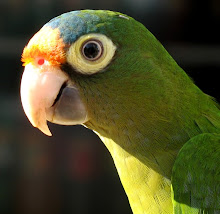Sunday, November 30, 2008
building the channel strips - pots

You can see how I did the wire-wrapping here and get an idea of what a sizable task this was to complete - an entire weekend worth - thankfully the 3 day test cricket was on so I kept my brain awake by listening to Australia kick the Kiwi's asses.

I'm convinced that I chose the WORST possible solution for connectors, but anyway, you live and learn. Don't use these they are so laborious - use IDC headers or others.

Fly cables made and fitted and we're done and dusted - again I was pretty stoked with the end result, but I seriously thought this one through and took my time with it.
building the channel strips - switches & faders


Thursday, November 27, 2008
building the housing

Clamp and cut the angle strips to length, then flush off on the disc-sander. This leaves the edges perfectly straight and square.
Tuesday, November 25, 2008
selecting components - pcb stripboards
selecting components - switches & leds




Had to cut off those stoopid guide pins on each button - no way I'm drilling 2 extra holes per button just so they sit flush!



I burnt out the RED cathode on my demo LED so you only see blue and green here but it gives you an idea of what I'll achieve. The other hint here is that I filed down the LED housing so I could bend the legs 90 degrees and fit the LED in the switch facing upwards to get the brightest effect.
Monday, November 24, 2008
selecting components - faders
Sorry I never took a nice pic of these but you'll see later on when I get to the channel strip modules.
selecting components - pots & knobs
The MIDIBox hardware dictates that your pots must be 10k linear - that's about it. What I've heard is that for this particular application you don't have to get the most expensive high-quality pots. That left a lot of choices, so I decided that I wanted a standard 16mm type with a shorter 6mm D-style stem so I could mount them close together, without having to PCB mount them and without having to trim 128 stems (annoying) and that most D-type push-on knobs would fit. I ended up finding the cheapest and best match via Electus Distribution, who supply JayCar retail outlets, so you get them cheap (part #RP7510 product page found here).
Knobs were a little harder. I won't have a rant about how expensive nice components are but it's obvious the industry manages a tight strangle-hold on profits by keeping nice components expensive - especially in relation to DIY or prototyping. After spending several weeks sifting through lots of options there was really nothing available for my purpose (I even considered making my own out of aluminium or perspex rod). I needed a simple, small diametre (more than 10mm is no fun on the fingers) that suported a color indicator or cap, that would fit a 1/4" D style pot and was less than $1 AUD each. In the end what I discovered was the nice cheap knobs I got as a sample from Electus/Jaycar might work. They fit a 6mm spline pot which was originally no good to me, but I fitted a 1/4" drill to the drill press and easilly drilled a couple out and they then fitted on perfectly - the snug fit ensured they won't come loose or need a grub-screw or need to be glued and are seriously cheap in bulk and come in 5 colors! (part numbers HK7730, HK7731, HK7732, HK7733, HK7734)
Sunday, November 23, 2008
uploading the midibox software









































